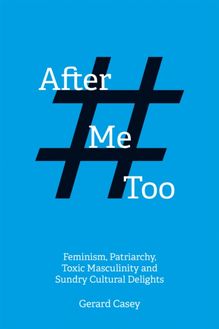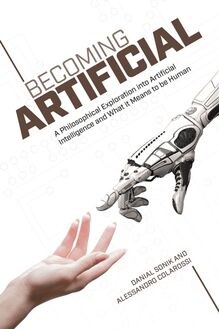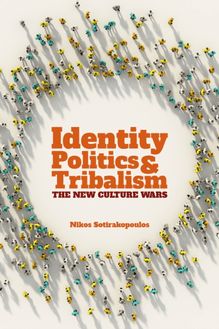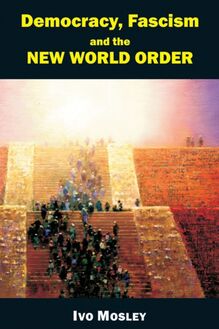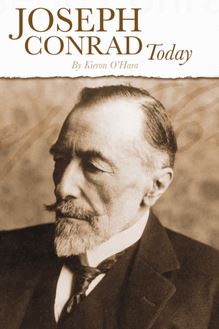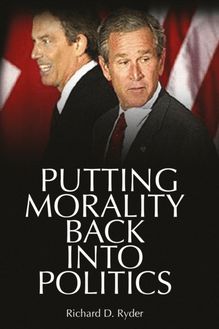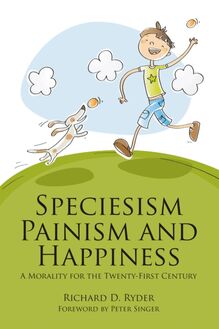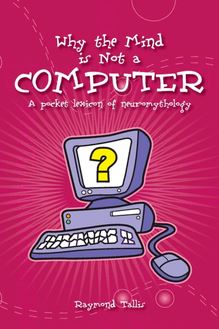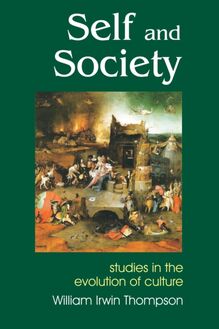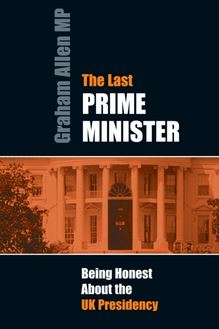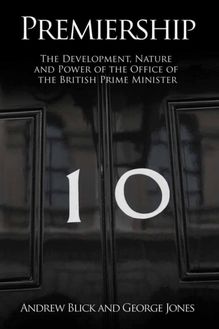-
 Univers
Univers
-
 Ebooks
Ebooks
-
 Livres audio
Livres audio
-
 Presse
Presse
-
 Podcasts
Podcasts
-
 BD
BD
-
 Documents
Documents
-
- Cours
- Révisions
- Ressources pédagogiques
- Sciences de l’éducation
- Manuels scolaires
- Langues
- Travaux de classe
- Annales de BEP
- Etudes supérieures
- Maternelle et primaire
- Fiches de lecture
- Orientation scolaire
- Méthodologie
- Corrigés de devoir
- Annales d’examens et concours
- Annales du bac
- Annales du brevet
- Rapports de stage
La lecture à portée de main
Vous pourrez modifier la taille du texte de cet ouvrage
Découvre YouScribe en t'inscrivant gratuitement
Je m'inscrisDécouvre YouScribe en t'inscrivant gratuitement
Je m'inscrisEn savoir plus
Vous pourrez modifier la taille du texte de cet ouvrage
En savoir plus

Description
Sujets
Informations
| Publié par | Andrews UK |
| Date de parution | 11 janvier 2017 |
| Nombre de lectures | 0 |
| EAN13 | 9781845405380 |
| Langue | English |
Informations légales : prix de location à la page 0,0324€. Cette information est donnée uniquement à titre indicatif conformément à la législation en vigueur.
Extrait
Self and Society
Studies in the Evolution of Culture
Second Enlarged Edition
William Irwin Thompson
Imprint Academic
2017 digital version converted and published by
Andrews UK Limited
www.andrewsuk.com
Copyright © William Irwin Thompson, 2004, 2009
The moral rights of the author have been asserted
No part of this publication may be reproduced in any form without permission, except for the quotation of brief passages in criticism and discussion.
Imprint Academic
PO Box 200, Exeter EX5 5YX, UK
In Memory of Laurance S. Rockefeller
Part One
Introduction: Studies in the Evolution of Culture
The studies in this volume grew out of my twenty-four-year collaboration with the chaos mathematician Ralph Abraham, so I would like to put this work on cultural history into the cultural history of my own work with my Lindisfarne Association colleagues in the period of the last two decades of the twentieth century.
In the 1980s, a group of video and electronic artists, computer scientists , mathematicans, and ‘new edgey’ sorts of thinkers was founded in Los Angeles by the late Andra Akers and called International Synergy. In the fall of 1985, I was in New York, conducting a symposium on the Gaia theory of Lovelock and Margulis [1] when Andra asked me to come to Los Angeles for the weekend to give an informal talk at the Los Angeles Film Institute in response to what I would see there in a conference cum performance of artists in the new electronic and computing media. [2] As part of this gathering, Andra arranged a party at her house in West Hollywood in which all the artists and scientists took part. One of the people I just had to meet, Andra insisted, was the mathematician and chaos theorist from the University of California at Santa Cruz, Ralph Abraham. Since I had recently read some articles about chaos theory in The Scientific American, I was quite interested, but also somewhat afraid, for like many people in the humanities, I suffer from a severe case of ‘math anxiety’. Much to my surprise and delight, Ralph was interested in everything - art, religion, science, as well as mathematics - and was not at all interested in controling experience with abstractions. Not at all like so many of the scientific reductionists I had met before, Ralph and his attraction to chaos theory seemed energized precisely because of an interest in the relationship between lively intellectual structures and living forms in nature. Looking more like a countercultural Jerry Garcia than an Olympian Albert Einstein, Ralph was not intimidating, so I began to open up to his way of thinking, one that seemed to fit in well with the complex planetary dynamics of the Gaia theory, and one also that seemed to offer a way out of the rigidity of ‘sacred geometry’ that in our Lindisfarne Summer School on Sacred Architecture under Keith Critchlow’s charismatic mastery had fast become an authoritarian platonic cult. I was looking for a way out of the closed, esoteric, and rigid geometry of containment in an unchanging eternity, and there in Ralph’s chaos theory, a door to another way of understanding the geometry of the phase portraits of complex systems seemed to open up.
At the time I had met Ralph, I had just published my science fiction novel, Islands Out of Time , [3] which expressed my allergic rejection of the organ transplant of European anti-democratic platonism to the Lindisfarne Summer Institute in Crestone, Colorado, but I was also at work on a shift from cultural history to cultural ecology.
The founder of the United Nations’ Environmental Program Maurice Strong had organized a conference in New York in February of 1983 in which he asked various environmental activists and thinkers from around the world to take part. Strong had organized the Stockholm Conference in 1972, and this had been responsible for the establishment of the United Nations new program on the environment ; now Strong was continuing with the work that would lead to the Rio Summit on the Global Ecology in 1992. Strong had also donated the land for the establishment of Lindisfarne in Crestone, Colorado and had taken part in one of our Lindisfarne Fellows conferences on ecology, in which the Fellows and a group of about eighty people took part. Among them were Amory and Hunter Lovins, John and Nancy Todd, David Orr, Hazel Henderson, Wendell Berry, David Ehrenfeld, Wes and Dana Jackson, James Lovelock, Sim Van der Ryn, Paolo Soleri, Paul Sears, Gary Nabhan, and Gary Snyder. The Lindisfarne Fellows presented an understanding of ecology and governance that was in advance of the Leftist position that Strong enjoyed in the world of national governments, NGOs, and multinational corporations. The UN conference he organized at the Waldorf Astoria in New York was a reflection on the global predicament seen ten years after Stockholm and ten years before the Rio Conference to come. In recognition of the Lindisfarne approach, I was invited to come to give a talk and to take part in a swanky black tie dinner for the global notables. I declined the invitation to the black tie dinner, as black ties and tuxedos give me cultural contact dermatitis, but I did agree to give a brief talk in which I offered another way of looking at Western Civilization as a movement through ‘Four Cultural Ecologies’.
The satellite perspective of history that I offered was so lofty that the talk had as much impact on the audience as a passing cloud, and I remember being followed by a more conventional presentation by David Lilienthal, a founding father of the Atomic Energy Commission , and he spoke of the need for more economic growth and the construction of more nuclear reactors. I retreated to my customary solitude in Bern, Switzerland, and the talk was subsequently published in the Green activist journal Resurgence [4] - which is certainly a case of ‘preaching to the choir’.
In spite of the lack of interest in this new approach, I was quite taken with the shift from intellectual history to cultural ecology and continued to work on expanding the brief talk into a more fully developed essay. I was in the middle of this work in Bern when I received Ralph’s paper, ‘Mathematics and Evolution’, which he sent me as a follow-up to our meeting in Los Angeles. The essay was very brief - a kind of intellectual telegram, which is often Ralph’s favoured mode of expression - and was just about as fast and schematic as my talk in New York had been; but it had enormous impact on me, for suddenly I saw that the four cultural-ecologies that I was describing had not only four associated literary forms of narrative but four greater mentalities in which mathematical exposition and literary narrative were inseparably united in a historical world-view. Everything fell into place in one of those ‘Eureka’ kinds of peak experiences that give the intellectual life its unique joy. I rewrote my essay, working in this new theory of literary -mathematical mentalities that are embedded in cultural ecologies , and sent off the revised version just in time for it to make it into my new book, Pacific Shift , as the chapter entitled ‘The Four Cultural -Ecologies of the West’.
Intellectual peak experiences are, I guess, by their nature rather isolated and isolating ones, for this book, much like the talk I gave in New York, had absolutely no impact and it went out of print within a year or two of its publication and never made it into paperback, except for two small and very obscure editions in German and Japanese . But Ralph and I carried on with our dialogue and I arranged a meeting of the Lindisfarne Fellows at Esalen in Big Sur, California in which Mary Catherine Bateson, James Lovelock and Francisco Varela interacted with Ralph. As these interactions continued to develop, they became expressed in my next book, Imaginary Landscape: Making Worlds of Myth and Science .
Our next collaborative project was to be an effort to unite mathematics and art in a performance at the high altar of the Cathedral of St. John the Divine in New York of what I called Electronic Stained Glass. Through the use of an enormous screen, a video projector, a superfast computer, and performances by three mathematicians using a modified stringed instrument and two piano keyboards, invisible micro-structures of time were presented as visual geometries of the phase-portrait of their behavior in our world of slower, human time. As part of the evening’s presentation, I did one riff with the band in which I read a poem combined with footage of spirochetes taken from the microscope filmings at Lynn Margulis’s lab that I had edited and made into a music video, and that Ralph then set to theme and computerized variation. With an audience of about 300 people, we presented our scientifically avant garde experiment in the vault of that enormous Gothic cathedral. This performance of ‘MIMI and the Illuminati’ was intended to be more a moment of Wissenskunst than Wissenschaft . It was enormous fun and though certainly too experimental to be yet great art - more like a child’s kaleidoscope than a rose window from Chartres - it was, nevertheless, an event unlike anything any of those present had seen before.
This expression of a form of presentation that was not simply mathematics and not simply art set Ralph and me to thinking about the whole relationship between mathematics and art, and in conversations at the Cathedral with the architect Santiago Calatrava, and other Lindisfarne Fellows - the atmospheric chemist James Lovelock , the biologist John Todd, and the botanists Paul and Julie Mankiewicz - we worked on the design of a bioshelter for the roof of the Cathedral in which Lovelock would design electron capture devices that would read the atmosphere interacting with the exhalations of the visitors and Ralph wo
-
 Univers
Univers
-
 Ebooks
Ebooks
-
 Livres audio
Livres audio
-
 Presse
Presse
-
 Podcasts
Podcasts
-
 BD
BD
-
 Documents
Documents
-
Jeunesse
-
Littérature
-
Ressources professionnelles
-
Santé et bien-être
-
Savoirs
-
Education
-
Loisirs et hobbies
-
Art, musique et cinéma
-
Actualité et débat de société
-
Jeunesse
-
Littérature
-
Ressources professionnelles
-
Santé et bien-être
-
Savoirs
-
Education
-
Loisirs et hobbies
-
Art, musique et cinéma
-
Actualité et débat de société
-
Actualités
-
Lifestyle
-
Presse jeunesse
-
Presse professionnelle
-
Pratique
-
Presse sportive
-
Presse internationale
-
Culture & Médias
-
Action et Aventures
-
Science-fiction et Fantasy
-
Société
-
Jeunesse
-
Littérature
-
Ressources professionnelles
-
Santé et bien-être
-
Savoirs
-
Education
-
Loisirs et hobbies
-
Art, musique et cinéma
-
Actualité et débat de société
- Cours
- Révisions
- Ressources pédagogiques
- Sciences de l’éducation
- Manuels scolaires
- Langues
- Travaux de classe
- Annales de BEP
- Etudes supérieures
- Maternelle et primaire
- Fiches de lecture
- Orientation scolaire
- Méthodologie
- Corrigés de devoir
- Annales d’examens et concours
- Annales du bac
- Annales du brevet
- Rapports de stage
